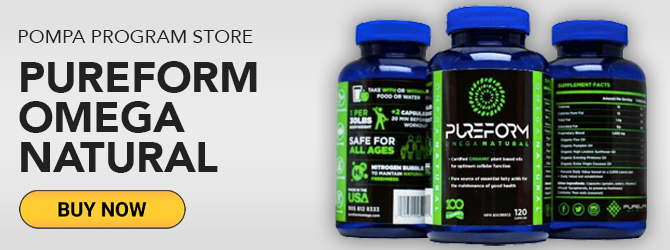
My favorite, most cutting edge topics are stem cells, and stem cell therapy. In case you missed Episode 220 of Cellular Healing TV, I interviewed Dr. Harry Adelson on Stem cell therapy for pain, shared my personal experience with the full body stem cell makeover, and my wife Merily’s stem cell vampire facial. In this particular episode, I interviewed Dr. Ernesto Gutierrez, a Regenerative Medicine Physician in Mexico, who is doing some amazing, cutting edge work with stem cells. We dove way beyond pain here, and discussed the benefits of stem cell therapy for all types of autoimmune and neurodegenerative conditions.
Dr. Gutierrez developed a specific stem cell therapy protocol for his patients with Parkinson’s, Alzheimer’s, Multiple Sclerosis, Charcot-Marie-Tooth Disease, and many other autoimmune disorders. In one of his clinics, he deals exclusively with patients who have autism and cerebral palsy. Dr. Gutierrez has treated close to 500 patients now with this protocol, and stated his team is seeing some very positive outcomes.
What are stem cells and how do they function in the body?
According to Dr. Gutierrez, stem cells are the most basic level of a cell. They have two simple characteristics. One is that they can replicate or self-renew. From one cell, you get two and you get four and you get eight identical cells. The second characteristic is that they can differentiate, which basically means stem cells can become different tissues. This is where the name stem comes from. The stem can branch out into different specific tissues. Stem cells can turn into blood, bone, muscles, nerves, and neurons. We all started at conception as being one cell, and we branched out and grew. However1, more studies are focusing on the effect stem cells have on stimulating the body to produce its own stem cell activity. This is called a “paracrine effect.”
Newer studies have shown that stem cells do not stay around in the tissue as long as they once thought. This lead scientist to lean more towards the paracrine effect being where most of the healing is derived. Stem cells (mesenchymal cells) secrete a spectrum of paracrine factors, collectively termed as ‘secretome’, consisting of various proteins for diverse biological functions. Some of these functions include immune system regulation, angiogenesis (makes new arteries), protects and makes new cells, antioxidant effects, the promotion of your own stem cells, and even telling them what cells to become2.
The future of Stem Cell Therapy
Part of the paracrine effect are from small (100nm) cellular vesicles called exosomes. These exosomes act as the communication bubbles from stem cells to your own cells to start the healing. These exosomes have some advantages over stem cells. First off, they are not cells but only carry the information of healing, so they are more stable. Exosomes do not need to be harvested from your body. This means it is easier to just go in, get the injection and leave. Exosomes are considered very safe ,and (new studies are showing) more effective. They are very small in size, allowing them to cross into the brain and other deep tissue. This creates an excitement regarding brain related conditions. Exosomes even can regulate and change genes from bad to good, which is known as epigenetics. This effect could be why it is showing promise in autoimmune3.
Gutierrez suggests, “We used to believe that the stem cells would go to a specific injury site and would differentiate and become cartilage or bone or muscle or whatever tissue was damaged. Now we know that very minute percentage of cells that actually remain in the body after maybe 10 to 14 days.”
The rest of the stem cells actually go into the body and start releasing exosomes and cytokines, anti and pro-inflammatory markers, and that is how the immune system repairs and rebalances. This is why it is called Regenerative Medicine. Stem cells do not replace, rather, they go in and promote your body to do the work of replacing its own tissues.
During my procedure, I had exosomes along with my own stem cells injected in my bad disc and every vertebral level of my spine. I also had exosomes injected into my knees, elbows, and face and did an IV of exosomes after a 6 day fast for maximizing their results. This has turned back the clock for my joints, and helped heal my past injuries. We lose these precious stem cells as we age. We stop healing at the same rate we use to, and this is due to a decrease in viable stem cells.
Stem Cell Therapy and Aging
As we age, both the quantity and the quality of the stem cells that remain in our bone marrow and our different tissues starts decreasing exponentially. There are several influences on this, such as our nutrition, our environment (toxins), our work, our stress levels, and our sleep to name a few. In my practice, I deal with very toxic people, and stem cells get destroyed. In order to grow new stem cells, we utilize many of my Ancient Healing Strategies such as fasting to facilitate stem cell growth.
The stem cells can only potentiate whatever the individual is already doing. People who commit to following a healthier lifestyle through my Multi-therapeutic approach, tend to benefit the most from these stem cells. These people are going to see benefits much quicker and much more evidently than (for example) a high-performance athlete who has taken pristine care of his body and he's in his mid-20s. These aging people, typically in their 50’s and up, who have been dragging and doing all these bad things to their body are going to feel like a million dollars afterwards!
For younger patients (such as children with autism) who have not been exposed to as many years of environmental toxins, Dr. Gutierrez utilizes the patient’s own cells with less rejection and great results. However, for the older individuals who have been exposed to years of toxins and looking for ‘anti-aging’ he finds the best results with donated younger stem cells. Gutierrez finds that these younger donated stem cells work best for inflammatory conditions and neurodegenerative conditions such as Alzheimer’s, Multiple Sclerosis and Lupus.
Harvesting Natural Killer Cells for Autoimmunity
Gutierrez and his team are also banking and harvesting natural killer cells from peripheral blood. From a blood draw, the process and can back and harvest your own natural killer cells and those are even better at rebooting your immune system and giving you all these longevity benefits.
In the U.S. we can legally get them banked. However, they still cannot legally be injected. Gutierrez has people come down to Mexico, they get an infusion of their own NK (natural killer) cells.
“The difference is noticeable with the natural killer cells. It's this big boost of energy of … I don't know how to explain it because like I said, I don't have a specific diagnosis that I was treating, but you do feel this boost especially if you have someone or if you have a family history of certain cancers and you want to prepare yourself, it's a great idea to bank yourselves in advance so that if you do develop cancer down the road, you can get your own personalized infusion, of your own healthy NK cells.”
These natural killer cells might also prove to be promising for cancer and lyme disease. Gutierrez suggests harvesting and banking them so if any of these conditions arrive, you have the killer cells ready. Whereas it’s more difficult to harvest them from people who already have lyme.
I’m very excited about harvesting these killer cells and look forward to harvesting and utilizing my own natural killer cells for my next stem cell therapy treatment!
Regenerative Medicine For Neurodegenerative Conditions: The Future Paradigm for Wellness
Dr. Gutierrez makes it clear that the process of getting stem cells is very comprehensive. People travel from all over the world. “We've had families from Australia, we've had families from South Africa.” These people are evaluated remotely with full a chemistry panel, a bone marrow aspirate is done to promote more stem cells being produced in the marrow (something that cannot be done legally yet in the US). He creates an infusion with cerebrospinal fluid, and there are multiple days of IV injections that take place. In order to reach the brain tissue for these neurological conditions, Gutierrez deposits these stem cells around the brain and brainstem.
With many of these neurological conditions, Dr. Gutierrez reminds us that the process is long and slow. Often there is an initial improvement and then the disease progresses again. The healing process waxes and wanes. It is important to understand that with many of these conditions, if we achieve slowing down the progression of the disease, even temporarily, this is considered to be a big win.
Stem Cell Therapy is Not a Secret Formula
Dr. Gutierrez reminds us that IV stem cell therapy and stem cell injections are not some ‘secret formula’. It is something that pretty much anyone could be doing, especially if we get to a point where FDA approves this in the U.S. He reminds us that he is not doing this work to steal work from doctors. Like myself, Dr. Gutierrez truly believes in what he does, sees the amazing results yielded, and wants to help as many people as possible. He has plans to start training doctors all over the world, and I am excited to be a part of this. I’m just as excited as well to share this cutting edge modality with my doctors, which complements my cellular healing and detox protocols so well.
Stem cell therapy is something done in addition to following my multi-therapeutic approach to healing. I've been amazingly successful at treating these types of neurological conditions in my own practice. My brain detox that I teach doctors around the country has been unbelievable. I’ve worked with children with autism, older people with dementia, and even neurodegenerative cases with remarkable results. I believe that putting these two things together (removing the toxins and utilizing the stem cells) would continue to drive healing, and possibly remission in many cases. Regenerative Medicine is the future of medicine. This is truly next level, and I am just thrilled to be a part of this exciting time!

References:
- CHTV Episode 220: Can Stem Cells Fix Your Pain?
- Ancient Healing Strategies for Modern Times
- Intermittent Fasting – A Top 5 Strategy to Create Your Best Health Ever
- PompaCore Cellular Detox – A Top 5 Strategy to Create Your Best Health Ever
- (R.H. Lee, A.A. Pulin, M.J. Seo, D.J. Kota, J.Ylostalo, B.L. Larson, et al.Intravenous hMSCs improve myocardial infarction in mice because cells embolized in lung are activated to secrete the anti-inflammatory protein TSG-6
Cell Stem Cell, 5 (1) (2009), pp. 54-63)
(C.W. Park, K.S. Kim, S. Bae, H.K. Son, P.K.Myung, H.J. Hong, et al.Cytokine secretion profiling of human mesenchymal stem cells by antibody array)
Close
(B. Fang, Y.P. Song, L.M. Liao, Q. Han, R.C.ZhaoTreatment of severe therapy-resistant acute graft-versus-host disease with human adipose tissue-derived mesenchymal stem cells Bone Marrow Transplant, 38 (5) (2006), pp. 389-390 Int J Stem Cells, 2 (1) (2009), pp. 59-) - (Close X. Liang, Y. Ding, Y. Zhang, H.F. Tse, Q. LianParacrine mechanisms of mesenchymal stem cell-based therapy: current status and perspectives
Cell Transpl, 23 (9) (2014), pp. 1045-1059) - (M. Maumus, C. Jorgensen, D. NoelMesenchymal stem cells in regenerative medicine applied to rheumatic diseases: role of secretome and exosomes
Biochimie, 95 (12) (2013), pp. 2229-2234)








